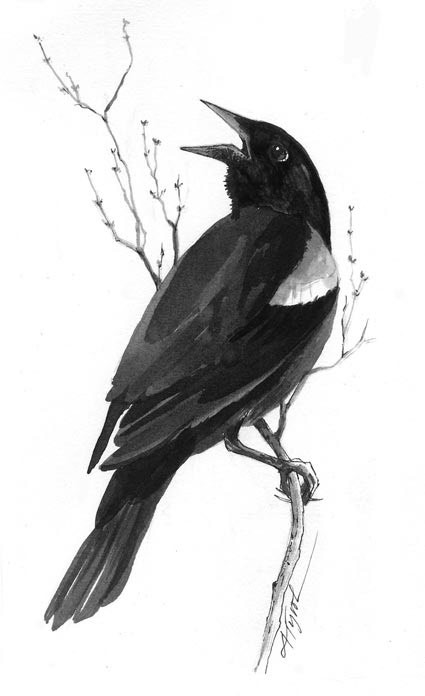
Early spring in this part of the world is a rugged season, a time when snow banks crumble, back roads become mud holes, and steam begins to issue from sugarhouses. Mud and maple syrup go together for reasons as obvious as melting ice. Suddenly, the land awakens from winter – there’s work to be done!
We’re not the only ones awakening and going about our business. Male redwings have been infiltrating the area for weeks. And now their raucous call can be heard along every bog, swamp and waterway: Okaleee! Loud, harsh and belligerent, the redwing’s unmusical call is music to my ears, one of the earliest sounds of the season.
Near my home in Montpelier there are a couple of fairly obvious places to hear this harbinger of spring. One is Berlin Pond, but the pond is often slow to open up. The other is along the Winooski River. And there, this year, I was in luck. The river was ice-free and flowing, and along its banks, hordes of redwings were swirling about, calling and jousting for territory. There are many other good spots across Vermont and New Hampshire to look for redwinged blackbirds. They like marshy, brushy places – anyplace with protected open water and shelter.
They are not always the first birds to arrive in early spring. Turkey vultures and grackles sometimes precede them. But redwings are so boisterously vocal that they easily catch our attention and reward careful watching. They are handsome birds, the males especially, with glossy black plumage and red-and-yellow shoulder epaulets.
Actually it’s only the male redwings that come up to the swamps and rivers of the North Country at first. Like any young bachelors, they’re getting ready for the arrival of the ladies. They have various calls and aggressive postures, all designed to keep other males from their chosen territory. It’s fairly common at this time of year to see a male redwing sit on an exposed perch, arch forward, spread its wings slightly and proclaim to other males: “This is my territory, mine and mine alone!” He might also sing while flying across his newly staked claim.
A few weeks after the males arrive, flocks of females come in. They perch demurely, waiting for the males to make fools of themselves over them. As with our species, that usually doesn’t take long, and females then select the mate and the territory and begin breeding and nesting. The females’ plumage is radically different from the males, and it reflects their different behavioral role. Since females must sit on the nest and incubate their eggs, they are, in effect, camouflaged—streaked with nondescript browns and tans from beak to tail. Beginning birders often mistake them for oversized sparrows.
Males are polygamous and often mate with as many as three females. The females subdivide the male’s established territory into subterritories, which they define and defend.
The female builds the nest by herself. It’s made of grasses and reeds, and it hangs almost invisibly from a reed stem or cattail in the marsh. Watch a female redwing carefully, and you can usually tell roughly where the nest is located. Females characteristically fly up vertically from their nest when alarmed, then move to a perch some distance away. Breeding and nest-building usually are complete by mid-May, and eggs are laid shortly afterward. The chicks hatch 10 to 12 days after the last egg is laid, then stay in the nest for a week or more before moving out into the cover surrounding their nest.
By late July or early August there’s almost no redwing chatter to be heard. In fact, the birds are hard to find. That’s because they have moved into cover for their fall molt, when they lose old feathers and grow new ones for their coming migration.
But then by autumn they are back in force, flocking up, making exploratory flights, swarming into the air as a group as if practicing for their migration. Soon their departure is genuine. Into the air they boil, apparently leaderless, seeming to be governed by a group intelligence that tells them: Now is the time! And then they’re gone for another four or five months.
Redwings are not major migrators – they head south, but usually they stay in North America. Some winter in southern New England, but more often they go to mid-Atlantic or mid-southern states. The fact they are not that far away is one reason they are among the first birds to return north.
And now they’re back near my home, calling vigorously, insistently from every eminence. They’ve been flatlanders for the past few months, but we’ll welcome them back to northern New England.


Discussion *